“Ribs in” is one of those things you hear at the aerial studio all the time. Usually when you’re hanging from your arms, sometimes when you’re laying on the floor doing abs or something.
Your coach probably came over and poked you and said “Ribs in!” and you tried to do something to in your ribs, but then you realized
“I can’t breathe”
*GASP*
Yeah, me too.
Here’s the thing. Our ribs aren’t only on the front of our body.
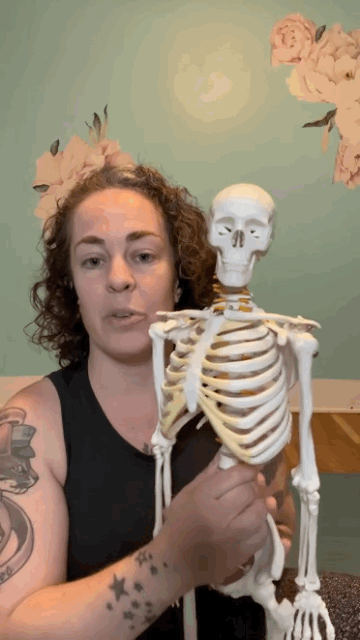
This sounds obvious, but I say it to point out what’s usually going on when ribs are “out” instead of “in”.
When we can see the front of the ribs lifting up, it’s usually because our whole rib cage is tilted forward.
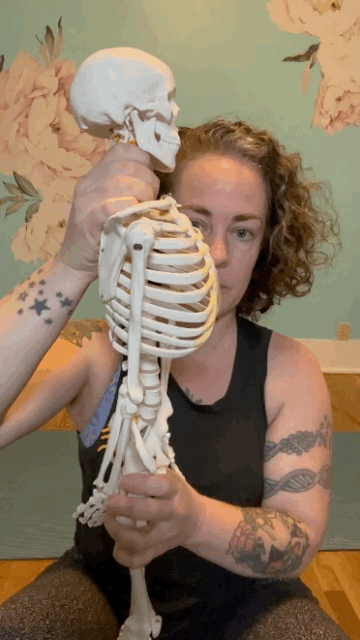
This could be happening for multiple reasons.
If you have tight lats, you may have to lift your ribs up to get your arms all the way overhead.
It could have to do with what you do for work.
If you’re postpartum, it might be because the bottom of your rib cage got pushed out while you were pregnant and haven’t gone back to their original shape.
And it’s almost certainly related to how you breathe.
Our ribs are supposed to expand 3 dimensionally when we breathe. If your ribs aren’t really expanding on the back during breathing, you usually end up lifting your ribs up in the front to compensate.
And now hopefully you’re starting to see how ribs might be “up” or “out”.
Poking someone in the front of the ribs isn’t really addressing the real issue, because the real issue is that the whole rib cage has tilted forward. Focusing on the front isn’t doing anything for the back.
Instead, we need to figure out how to tilt the whole rib cage back.
If this sounds familiar, here’s a couple of things to try:
Get into a childs pose with your legs together. You can put a pillow or a folded up yoga mat on your thighs, or do it without. The goal is to create some pressure on your belly and low ribs. Keep your arms in a comfortable position close to your body and start taking some deep breaths.
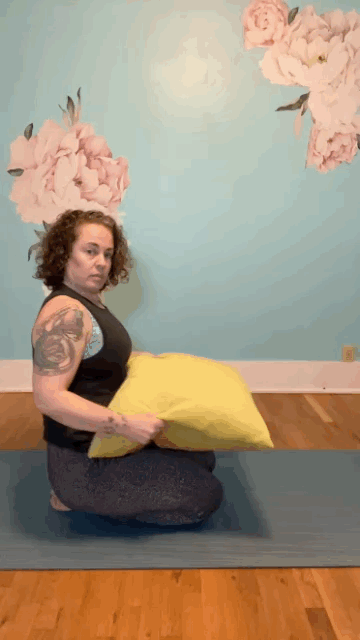
You want to focus on feeling the back of your ribs move. Feel the back of your ribs fill up. Feel the space between your shoulder blades get wider.
Do this until you start to really connect to the feeling of your back ribs moving.
Now grab a pillow or two, or something to put under your head and lay on your back.
Put your hands on your ribs on the front, take a deep breath, and as you exhale think about the BACK of your ribs sinking into the floor, and gently press your front ribs down. If this feels comfortable, great. If this feels like something you have to force yourself into, grab a pillow and try again.
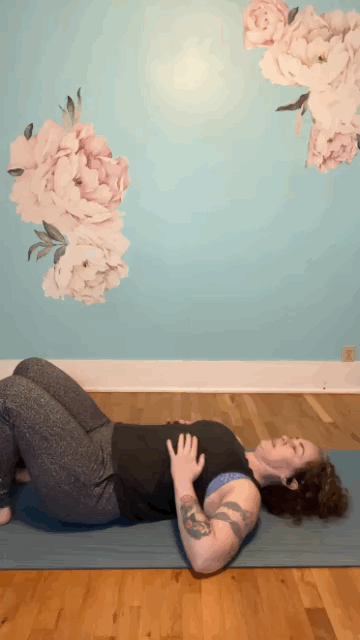
Keep propping yourself up until it feels more comfortable.

Now, hang out here for a while and take some deep breaths focusing on moving the back of your ribs. To me, it feels like the back of my ribs sink down into the ground as I inhale.
If that’s feeling good, we’re going to add in some arm movement.
Reach your hands up towards the ceiling. On an exhale, start bringing your arms towards your ears while keeping the back of your ribs heavy on the ground. Inhale and bring your arms back to your starting position. If your ribs start to lift as you move your arms, stop when you can’t keep the back of your ribs heavy.
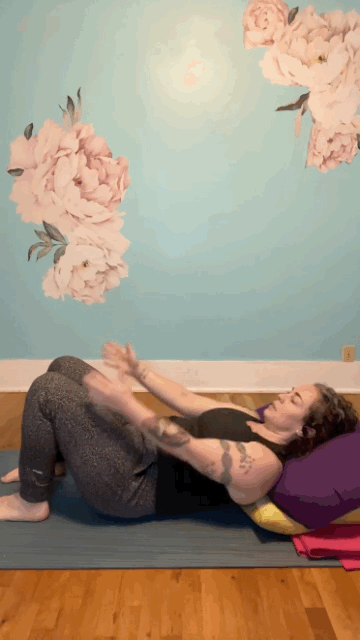
Once this feels comfortable, go hang on something and see if you can bring your ribs “back” instead of “in”!
This idea of bringing the ribs back and expanding the back of your ribs while you breath will help you find a stronger position in the air, but it’s doing so much more than that.
It’s helping your core work more effectively with less effort. And when that’s happening, your whole body is going to be a little bit happier.
If you want to learn more about how your ribs are related to your core function, breathing, and helpful tips and cues for teaching this to your students, check out my online workshop Your Aerial Core: Hollow Body and Beyond!
November 19th, 10am PST. The replay will be available if you can’t make it live!
